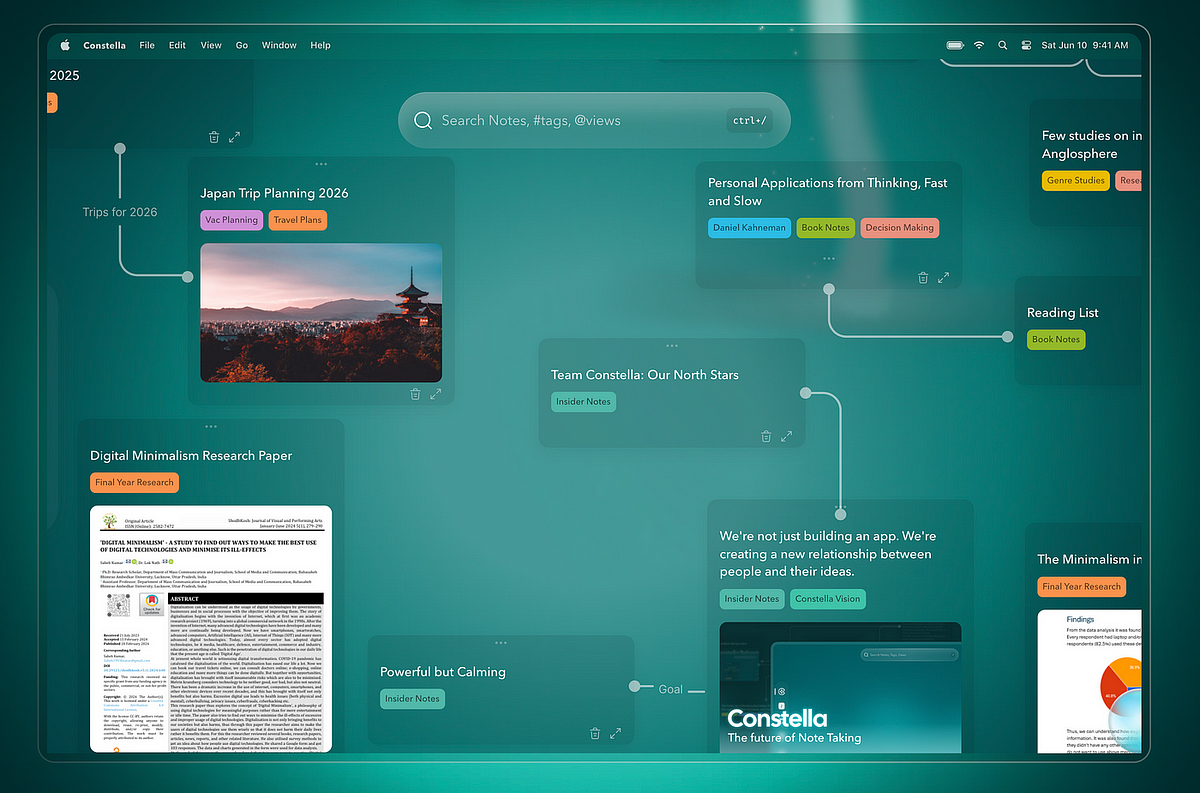The Best Methods and Tools for the Digital Note-Taking Revolution in 2025
By 2025, the manner in which students take notes will have changed dramatically. The days of writing on paper and misplacing crucial course information are over. Digital notetaking is now the gold standard for effective, structured, and engaging learning due to the proliferation of smart devices and AI-powered platforms.
However, digital notetaking involves more than just writing on a screen; it entails developing intelligent, searchable, and connected knowledge systems that improve productivity and retention. Let's examine the most effective methods and resources that are driving this revolution in 2025.
The Advantages of Modern Note Taking: Why Go Digital?
Taking notes digitally is more than just convenient; it's a step up in learning. The reasons for the change are as follows:
Content That Is Searchable: Immediately locate any topic, keyword, or idea.
Cloud Syncing: Get your notes from any device, no matter where you are.
Incorporate multimedia by adding links, images, audio, and video.
Organization – Use tags, sorting, and links to improve the structure of your notes.
Collaboration - Share and edit notes with classmates in real time
AI Features - Flashcard Creation, Autosummarization, and More
The Best Digital Note-Taking Software of 2025
The best resources for students to use in order to improve their note-taking process are listed below:
1. Conception
Because of its adaptability, Notion continues to be a popular option. No matter if you're creating study databases, jotting down classroom notes, or managing a study tracker, Notion can handle everything.
The Ideal Use: Project tracking, linked notes, and study organization
Features include: AI summaries, intelligent templates, and cross-device synchronization.
2. Microsoft OneNote
Popular with students who enjoy the feel of classic notebooks but desire digital convenience. With OneNote, you can write by hand, record audio, and effortlessly sync with Microsoft programs.
The best application is for handwritten notes, diagrams, and lecture notes.
Features: mathematical equation solving, cloud synchronization, and section tabs
3. GoodNotes (iPad + Apple Pencil)
GoodNotes combines the convenience of digital technology with the familiarity of pen and paper, making it ideal for pupils who like to write by hand. It's ideal for subjects with a lot of notes, like math or physics.
The Best Use: PDF markup, digital handwriting, visual learners
Features include: OCR search, flashcard mode, and gesture shortcuts.
4. Evernote
Still a force, Evernote allows you to store your ideas, web clippings, and research materials in a single, searchable location. It works nicely with todo lists and calendars.
The Best Use for: Extensive research courses, extensive notes
Web clipping, task lists, and synchronization across all devices are some of the features.
5. Obsidian
With Obsidian, notetaking becomes a knowledge network for more advanced learners. Using interconnected, markdown-based notes, it's ideal for building a second brain.
Ideal for: Thesis research, long-term learning, and concept mapping
Features include graph view, backlinks, and plugin customization.
6. Tana
With its sophisticated, organized design and AI-driven note suggestions, Tana is the rising star of 2025. It is beneficial for students who are juggling several subjects or academic endeavors.
Best For: Organized knowledge, task-oriented learners
Features: daily notes, connected reference trees, and AI-generated summaries
Methods for Improving Your Digital Notes
The proper tool is only half the equation. The following are some tried-and-true methods for getting the most out of your digital notes:
The Cornell Method (Digital Style)
Break up your digital page into sections for summary, notes, and cues. OneNote or Notion templates can be used to replicate this method successfully.
Mapping in Visuals
Use programs like Miro or Obsidian to make mind maps or flowcharts that link important concepts. Perfect for studying for exams and for visual learners.
Brain Zettelkasten Method
A robust mechanism in which each concept is represented as a distinct note, with all notes connected via context. The best examples of this are Tana and Obsidian.
Transcription and Audio Notes
Use Otter. ai to capture lectures and automatically produce text. Combine these transcriptions with your own digital comments in Notion or OneNote.
Tagging and intelligent highlighting
Use tags or hashtags to categorize content, and highlight important words. During test time, this facilitates review.
Bonus tip: Integrate with spaced repetition
To transform content into flashcards utilizing spaced repetition, use digital note-taking software like RemNote or Anki. Some systems even use AI to automatically create questions from your notes!
Conclusion: The Future of Notes Is Now
The digital notetaking revolution is not just a technological trend; it's a more intelligent and customized approach to learning. Students may better retain information, remain organized, and comprehend what they are learning with the appropriate resources and methods.
Therefore, it's time to move on if you're still in the realm of disorganized notebooks and misplaced handouts. Select a tool, discover your style, and allow technology to improve the way you learn.


Post a Comment
0Comments